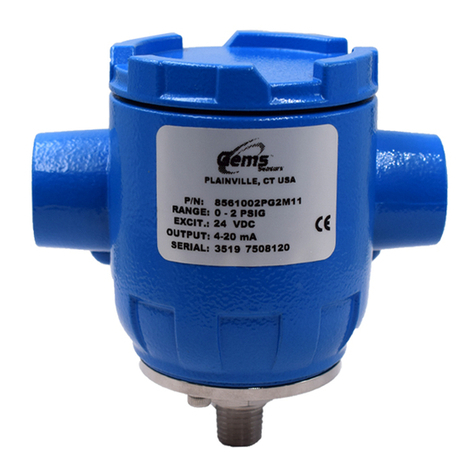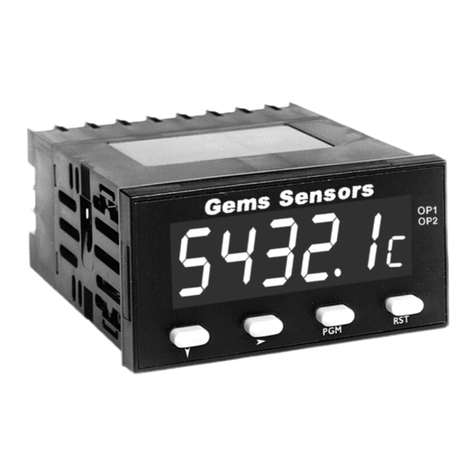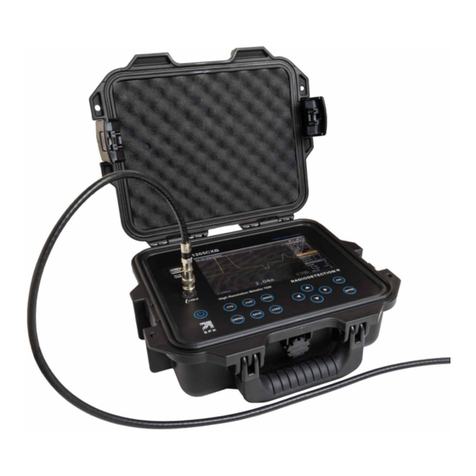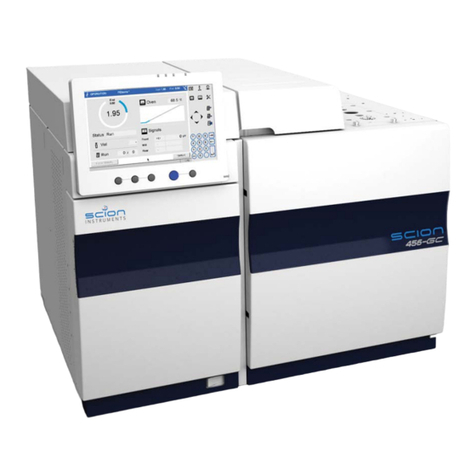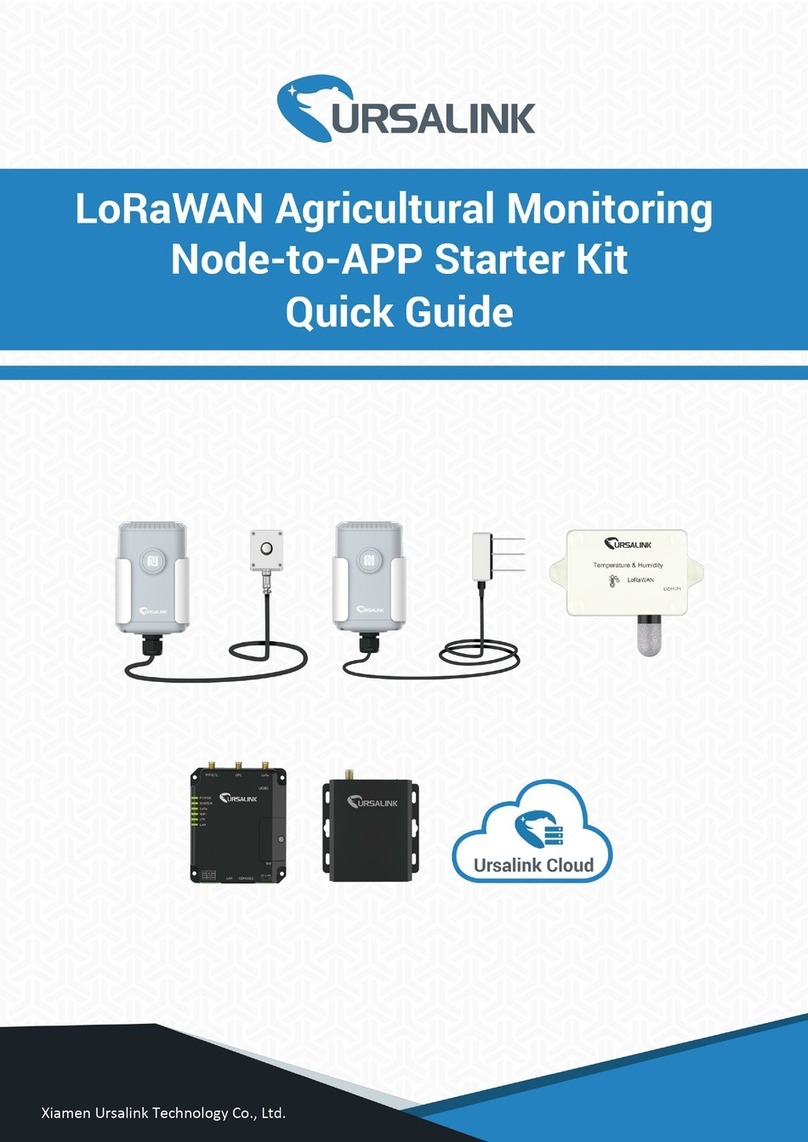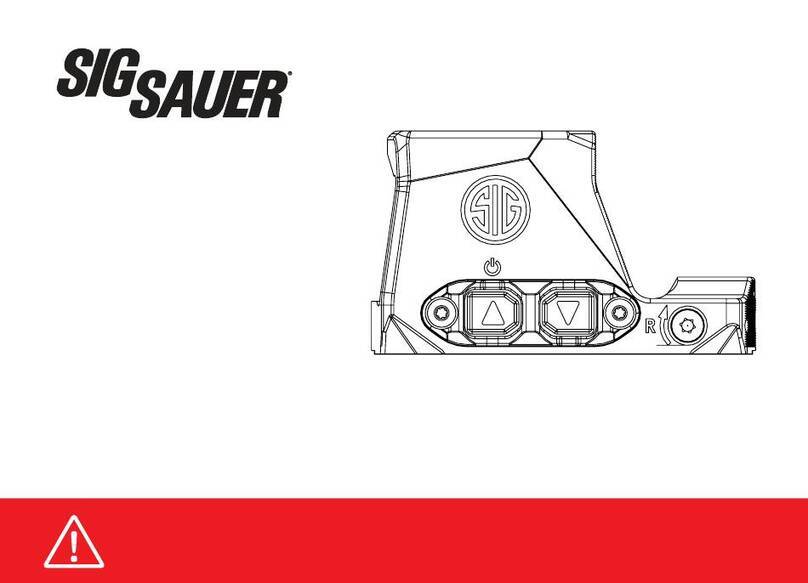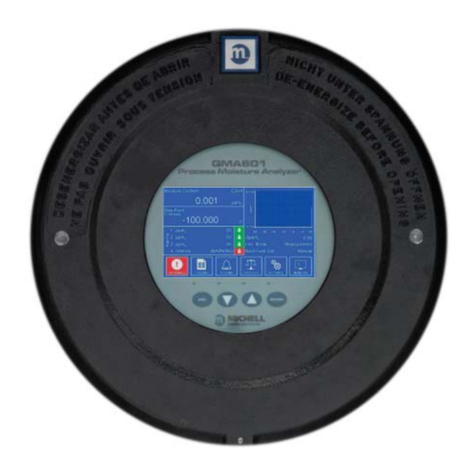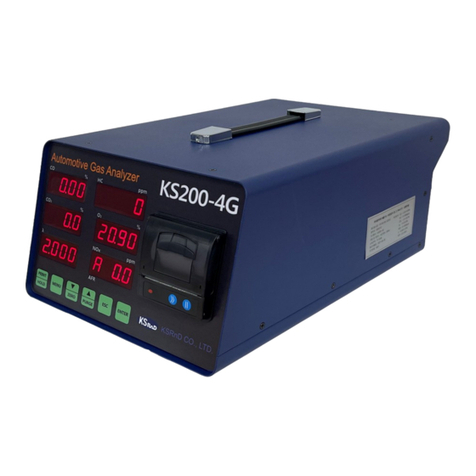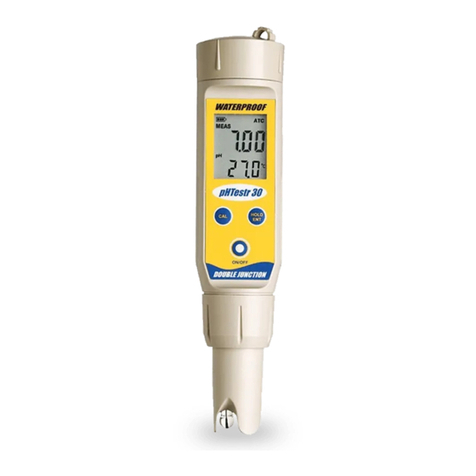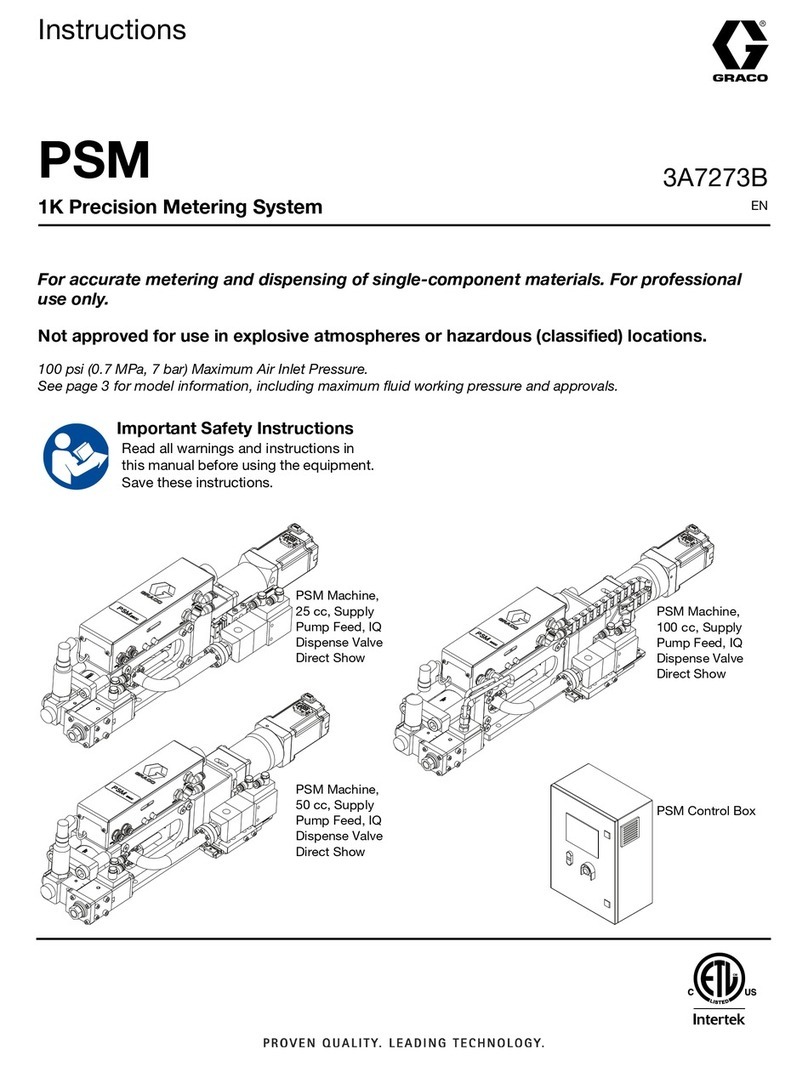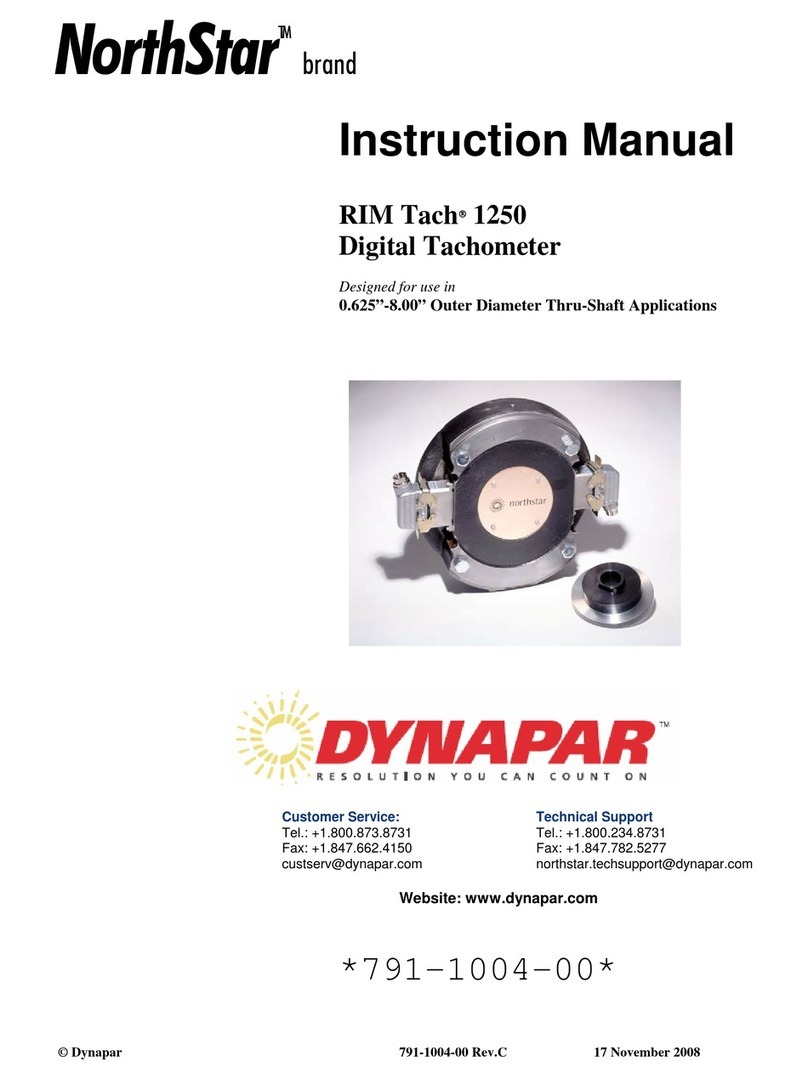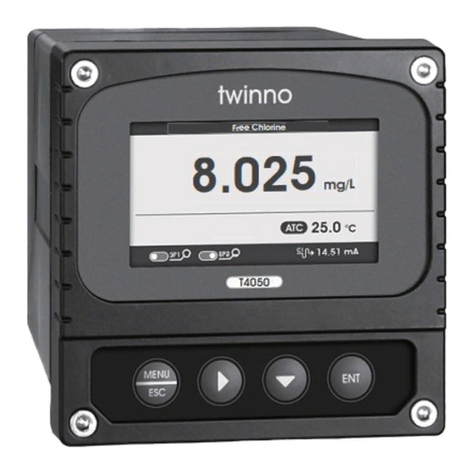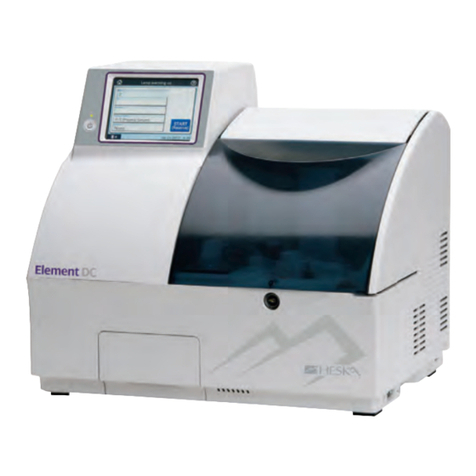Gems Sensors Warrick Series Owner's manual

Table of Contents
Page 2 Installation Instructions: Safe Sensing Circuits
- Mounting Location
- Wiring: General Information
Page 3 Installation Instructions: Safe Sensing Circuits
- Wiring Diagrams
Page 4 Operation Instructions
- Control Panel Settings
- Setting the DIP switches
Page 5 Operation Instructions
- Adjusting the Set Point Potentiometer
- Adjusting the Set Point Position: SVP-2 Sensor Only
Page 6 Technical Information
- Ordering Information
- Specifications
Page 7 Technical Information
- Module Replacement
Page 8 Operation Instructions
- Panel Operation
- Fuel/Water Pushbutton Operation
- Troubleshooting Guide
Page 9 Sample Wiring Diagram
- DMS-474-A-2 / DMS-574-A-2
Page 10 Sample Wiring Diagram
- DMS-478-A-1 / DMS-578-A-1
Page 11 Panel Dimensions
- DMS-474-A
-DMS-478-A
Page 12 Panel Dimensions
- DMS-574-A
-DMS-578-A
Warrick®Series DMS-470/570
Montoring Panels
Installation and Operation Bulletin
Form 725-B
Sheet P/N 7800824
Rev. A

Installation: Intrinsically Safe Sensing Circuits
Thisbulletinshouldbe usedby experiencedpersonnel asa guideto theinstallation ofthe SeriesDMS-470/570 alarm
panels. Selection or installation of equipment should always be accompanied by competent technical assistance. We
encourageyou tocontact Warrickorits localrepresentative iffurtherinformation isrequired.
Important
Before proceeding to install and wire the control panel,
read and thoroughly understand these instructions.
When the Series DMS 470/570 Monitoring Panel is installed according to these instructions, the panel will provide
intrinsically safe sensing circuits for interface into Class I, II. Division 1, Groups C, D, E, F and G hazardous loca-
tions. Electrical equipment connected to Series DMS 470/570 Monitoring Panel should not exceed maximum ratings
markedon product.
Mounting Location
The control must be situated in a non-hazardous area where an explosive atmosphere will not exist at any time.
Wiring: General Information
1. Intrinsically safe wiring must be kept separate from non-intrinsically safe wiring.
2. Intrinsically safe and non-intrinsically safe wiring may occupy the same enclosure or raceway if they are at least 2
inches(50mm) apartand separatelytied down.Inside panels,field wiringterminals forintrinsically safecircuits
must be separated by at least 2 inches (50 mm) from non-intrinsically safe terminals.
3. For sensor wiring, use #14 or #16AWG type MTW orTHHN wire. By using these wire types in conjunction with
thefollowing distancerecommendations, youwillnot exceedthe maximumcapacitance forfieldwiring.
Use Table 1 as a guide for maximum wire runs.
4. Intrinsically safe terminals can be connected to any non-energy generating or storing switch device such as a
pushbutton, limit or float type switch or any Warrick electrode and fitting assembly.
5. Alljunction boxesand fieldwireterminations shouldbe waterproof.Referto appropriatesensor instructionsfor
details on how to install sensors.
6. An approved seal should be used at the point where the intrinsically safe control circuit wiring enters the hazard-
ousarea.
7. Foradditional guidanceon“Hazardous LocationInstallation”and “IntrinsicallySafeDevices”, consult ANSI/ISA
standard RP12-6 orNEC articles500-516.
SensorWiring
Sensors: Wire the sensor devices to the Series DMS 470/570 Monitoring Panel as shown in figure 3-1 to 3-4. (A
separate rigid metallic conduit must be used to enclose the conductors of the intrinsically safe sensor
circuit. A conduit hub is provided on the bottom side of the enclosure for intrinsically safe wiring.)
Table 1
Model No. Number of Sensor Wires Distance Per Channel
DMS470/570
DMS470/570 All 2 Wire Sensors 900Feet
450Feet
All 3 Wire Sensors
2

3
Figure 3-2
Figure 3-3
Figure 3-4
Figure 3-1
Two (2) wire sensor connections for standard terminals
Sensor#1
Sensor #2
Sensor #3
Sensor #4
S1 G1 S2 G2 S3 G3 S4 G4 SIL TEST
Enclosure
ConduitHubfor
SensorWires ONLY!
2WireSensor
S1 G1
Sensor #1
(BLK)
(RED)
Sensor #1
Sensor #2
S1 G1 S2 G2 S3 G3 S4 G4 SIL TEST
Enclosure
ConduitHubfor
SensorWires ONLY!
(RED)
Sensor#1
3WireSensor
S2
G1S1
(GRN)
(BLK)
WATER
COMMON
FUEL
Sensor #1
Sensor #2
Sensor #3
Sensor #4
F1 C1 W1F2 C2 W2 F3 C3
Enclosure
ConduitHubfor
SensorWires ONLY!
(RED)
Sensor#1
2WireSensor
W1
C1
F1
(BLK)
W3 F4 C4 W4
ConduitHubfor
SensorWires ONLY!
Sensor #1
Sensor #2
Sensor #3
Sensor #4
F1 C1 W1F2 C2 W2 F3 C3
Enclosure
(RED)
Sensor#1
3WireSensor
W1
C1
F1
(BLK)
W3 F4 C4 W4
(GREEN)
WATER
COMMON
FUEL
Three (3) wire sensor connections for standard terminals
For those models using the optional “check” push buttons, wire sensors per Figures 3-3 and 3-4.
Two (2) wire sensor connections for Fuel/Water terminals
Three (3) wire sensor connections for Fuel/Water terminals
Installation: Intrinsically Safe Sensing Circuits

Control Panel Settings
Before putting system into operation, DIP switches and potentiometers (set point) must be set to correctly match the
type of sensor you are using. (Ref to Table 4-1). The DIPswitches and potentiometers are located above the sensor
terminal strip. (Figure 4-1)
Setting the DIP Switches
Table 4-1describes applications vs. DIP switch settings. Each channel will have its own setting corresponding to the type of
sensorbeing used.
INVERSE INVERSE
DIPSWITCHES
MIN 1 MAX
SETPOINT 1DIRECT 2 MIN 2 MAX
SETPOINT MIN 3 MAX
SETPOINT MIN 4 MAX
SETPOINT
3DIRECT 4
S1
FIELDWIRING
TERMINALSTRIP
G1 S2 G2 S3 G3 S4 G4 SILENCE TEST
SENSORCONNECTIONS
Figure 4-1
4
APPLICATION
DoubleWall Fiberglass
FuelSensing
DoubleWall Fiberglass
WaterSensing
Double Wall Steel
Hydrocarbon/WaterSensing
Double Wall Steel
LiquidSensing
ProductLevelAlarm
(NormallyClosed Float)
ProductLevelAlarm
(NormallyOpenFloat)
MonitoringWell
(HydrocarbonVapor)
Detector
UnusedChannel
Unknown
Unknown
WARRICK
SENSOR
DFP-25
DWP-25
DSP-2
DLP-2
LS-700/800
LS-700/800
SVP-2
None
Unknown
Normally
OpenSwitch
Unknown
Normally
ClosedSwitch
ACTIVATION
CONDITION
Closeson DetectingFuel
Closeson Detecting
Water
Closeson Detecting
HydrocarbonorWater
Closeson Detecting
Liquid
OpensonRising Level
Closeson RisingLevel
ResistanceIncreases
onDetecting Vapors
NA
Closedon Fault
Openon Fault
DIP SWITCH
SETTING
Inverse(“ON”)
Inverse(“ON”)
Inverse(“ON”)
Inverse(“ON”)
Direct(“OFF”)
Inverse(“ON”)
Direct(“OFF”)
Inverse(“ON”)
Inverse(“ON”)
Direct(“OFF”)
SET POINT
ADJUSTMENT
NA
NA
NA
NA
SeeInstructions on
set point setting
NA
SeeInstructions on
set point setting
NA
NA
ConsultFactory
Table 4-1
Operation Instructions

5
Adjusting the Set Point Potentiometer
DIP Switch Set In Inverse (ON) Mode: When using a channel in Inverse(ON), there is no need to adjust the potentiom-
eter. The channel is automatically set to the maximum sensitivity.
DIP Switch Set In Direct (OFF) Mode: Turn the potentiometer clockwise until it reaches the end of its rotation. Do not
force the rotation. When the potentiometer is adjusted to this position, it is set to the maximum sensitivity. When using
SVP-2 Vapor Sensors, it may be necessary to reduce this sensitivity. Continue with the following instructions.
The Following AdjustmentApplies only to those channels using an SVP-2 Vapor Sensor.
This adjustment will allow the alarm point to be set at a level just higher than the existing background contamination, thus
only indicating a potential new leak or spill condition.
CAUTION:As the Vapor sensor reacts over time (Months) to background (Existing) contamination, a false alarm
may occur. If this occurs, repeat the adjustment procedure.
1. With all appropriate potentiometers set to fill clockwise position, apply power to the panel and observe the state of the
indicator lights. Silence the audible alarm if necessary.
2. Upon power-up, no warning lights (audible alarm) should be on. If the warning lights are lit, proceed to step 3. Starting
withthe firstchannel usinga vaporsensor,turn thepotentiometer counter-clockwiseuntil thewarninglight turnson.
(silencethe audiblealarm) Turnthepotentiometer clockwiseuntil thealarmlight turnoff. Turnthepotentiometer an
additional1/8 turn.Repeatthis procedureforthe remainingchannelsusing vaporsensors.
3. If an alarm light remains lit, determine which channel is activated. Check the position of the DIP switch for the sensor
beingused onthat channel.Checkthe sensorwiring. Checkfor a truefault condition.Refer totroubleshootingguide for
furtherdetails.
WarningLightOff
(Step#3)
WarningLight On
(Step#2)Start
(Step#1)
Additional1/8Turn
(Step#2)
Full Clockwise position
Supply Power
Aweatherproof conduithubis providedon thetopof theenclosurefor supplypower wiring.Connectthe incomingsupply
HOT lead to the L1 terminal, NEUTRAL lead to the L2 terminal and EARTH GROUND lead to the “G”Terminal.
Grounding
Terminal “G” on the supply line/load side terminal strip is a redundant system ground terminal and must be connected to
theearth groundbuss ofthe panel’sACsupply linefeeder.
Remote Alarm Contact
A set of SPDT dry contacts activates on fault when any one of the four (4) channels alarms. Using the conduit hub on
the top of enclosure, wire contacts to remote alarm or indicator, if applicable (terminals 7,8 and 9). For low voltage
circuits, wiring should not be run in the same conduit as high voltage circuits. Conduit should be teed immediately after
leavingenclosure.
Optional Auxiliary Contact Board
A SPDT auxiliary set of contacts are available for interfacing to remote alarms, computers, tank gauging systems, etc.
Oneset ofcontacts perchannelare provided.Wire throughconduit hub ontop ofthe enclosure.(SeeFigure 9-1)
Operation Instructions

6
Ordering Information
General
One set of auxiliary contacts is standard with every (4) four channels supplied.Acommon test button is included as standard
forevery (4)four channelssupplied.The Fuel/Watercheckbuttons listedbelow areusedto distinguishwater orhydrocarbon
whenthree1 wiresensorsare used.
Specifications
Primary AC Supply Line: 120 VAC (plus)+ 10%, (minus) -15%, 50/60 Hz.
Probe Voltage: Nominal 12 VAC @ 6ma RMS
Sensitivity Range: 0 -50,000 Ohms maximum specific resistance
Temperature: (minus) -400 to (plus) +150° F
Remote Alarm Contact: (Terminals 7 N.C., 8 com & 9 N.O.)
Contact Design:SPDT (1form C):onenormally open(N.O.) andonenormally closed.
Contact Ratings: 120 VAC or 30 VDC, 5A1/10 H.P.
Contact Life: Electrical @ rated load = 100,000 cycles minimum. Mechanical = 10 million cycles minimum.
Electronics Module: Solid state components epoxy encapsulated in a black nylon shell
Module Terminals:
Screw Terminal Torque Rating: 5 -6 Inch/ Pounds
Field Wiring: Removable terminal strip, containing a size 4 (four) pan head screw with a clamping plate.
Will accept up to one #14AWG wires per terminal.
Factory Wiring: Removable terminal strip will accept up to one #14AWG wires per terminal.
Optional Auxiliary Board:
Auxiliary Contacts: One relay contact per channel.
Contact Design:SPDT (1form C):onenormally open(N.O.)and onenormally closed(N.C)
Contact Ratings: 120 VAC or 30 VDC, 10A 1/3 H.P.
Contact Life: Electrical @ rated load = 100,000 cycles minimum. Mechanical = 10 million cycles minimum.
Auxiliary Board Terminals:
Field Wiring: Removable terminal strip will accept up to one #14AWG wire per terminal.
Auxiliary Board Connection: Eight (8) pin wire harness connector.
Optional “Check” Pushbutton Board:
Terminals: Size four (4) pan head screw with a clamping plate, will accept up to one #14AWG wire per
terminal.“Check” pushbuttonboardand modulestrip shouldberemoved asanassembly fromelectronic
module.
Technical Information
A NOCHECKBUTTONS
B CHECKBUTTONS1-4
C CHECKBUTTONS1-8
D CHECKBUTTONS1-12
F CHECKBUTTONS1
G CHECKBUTTONS1-2
H CHECKBUTTONS1-3
1 NOAUX.CTS.
2 AUX. CTS. 1-4
3 AUX. CTS. 1-8
4 AUX. CTS. 1-12
6 AUX. CTS. 1
7 AUX. CTS. 1-2
8 AUX. CTS. 1-3
DMS-47X-X-X-X
DMS-57X-X-X-X
NO.OF CHANNELS FUEL/WATERCHECK
PUSHBUTTONS AUXILIARYCONTACTS
1 1CHANNEL
2 2CHANNELS
3 3CHANNELS
4 4CHANNELS
8 8CHANNELS
12 12CHANNELS
- NEMA3R
N4 NEMA4
N4XFG NEMA4XFIBERGLASS
ENCLOUSURE

7
Technical Information
Figure 7-1
Module Replacement Diagram
RemovableTerminal Strips
TerminalStrip
Removal
TerminalStrip
Removal FactoryWiring
Terminal Block
FieldWiring
Terminal Block
Separation
Point
Factory Wiring Field Wiring
Module Replacement
Ifthe electronicmodule needstobe replaced:
1.Turn offpowerto thecontrol panel.
2.Remove themetal barrierlocatedacross thecenter ofmodule.
3.Remove allfield wiringterminalblocks fromtheelectronic module.The fieldwiresdo notneed toberemoved
from the terminal blocks to do this. The terminal blocks separate at midpoint on the vertical as shown in
Figure7-1.
4.Remove thefactory wiringterminalblocks fromthe electronicmodule.The factorywiring doesnothave tobe
removedto dothis. Theterminal blocksseparate fromthe moduleatthe boardsurface asshown inFigure
7-1.
5.Remove thefour (4)machinescrews fromthe baseofthe electronicmodule. Themodulecan nowbe
removedfromthe controlpanel.
6.ReplacementModule:47D1BXXX
7. Install a new module and reinstall all of the terminal blocks. Make sure that all factory and field wiring is in
place.
8. Reinstall the metal barrier across the center of the module.
9. Set all DIP switches and potentiometers according to previous instructions.

88
Operation Instructions
Panel Operation:
Withsensors wiredto controlpaneland powerapplied,the normallight (yellow)shouldbe lit.Individual warning
lights(amber) areprovided foreach channel. Ifa sensordetects afaultcondition, thenormal lightwill de-
energize.Theappropriate warninglightwill thenenergize andtheaudible alarmwillsound.Tosilence the
alarm, push the SILENCE pushbutton. The WARNING light will remain lit until the fault condition is cleared. If a
secondfault occursbefore thefirstfault iscleared, theappropriate WARNINGlightwill energizeand thealarm
will sound. Each successive fault will cause the alarm to sound.
ATEST button is supplied to test the circuitry in the panel.To perform a test, push the TESTpushbutton and
hold. The NORMALlight will go off.All WARNING lights in that bank will light and the alarm will sound.
Releasing the TEST pushbutton will return the system to a normal condition.
All panels contain a master fault contact, which will activate if any one of the channels sees a fault condition.
This can be used to trigger a remote alarm or cash register. The master fault contact will reset when the
SILENCEpushbutton ispressed.
If optional auxiliary contacts are used, a SPDTdry contact is provided for each channel.To reset these contacts,
the fault condition must be cleared.
Fuel/ Water Pushbutton Operation:
If the audible alarm is energized, it can be silenced by momentarily depressing the SILENCE pushbutton.
However, to determine if this is a FUELor WATER leak, continue with the following instructions.
1.WATER PUSHBUTTON: (When audiblealarm isalreadysilenced.) Momentarilydepress theWATER pushbutton.If,after
release of the button the audible alarm energizes, this indicates a water leak. The audible alarm can be silenced again by
depressing the SILENCE pushbutton. If pushing the fuel button has no effect, continue to step 2.
2.FUEL PUSHBUTTON: (When audibleisalready silenced.)Momentarilydepress thefuel pushbutton.Ifafter releaseofthe
button the audible alarm engergizes, this indicates a fuel leak. The audible alarm can be silenced again by depressing the
SILENCEpushbutton.
Troubleshooting Guide:
A test button is used on all models to test the control panel. If the system is powered up and there are no fault conditions, the
normal contact should be lit. The warning lights and alarm should be de-energized. On pushing the test button, the normal
lights go off, all warning lights in that bank should light up and the alarm should sound. Push the silence pushbutton to de-
energize the alarm. Releasing the test pushbutton should return the system to a normal condition.
If a WARNING light has been activated and a true fault condition is not found:
1. Recheck position of DIP switch (Figure 4-1,Table 4-1). If correct continue.
2.If theDIPswitch isinthe InverseMode(“ON”)position,removingthesensorwiring attheterminal blockshouldde-
activatethealarm.Shortingtheterminal pointsshouldactivate thealarm.Ifthisdoesnothappen, replacetheelectronic
module.
3.IftheDIPswitchisintheDirect Mode(“OFF”)position, removingthesensor wiringatthe terminalblockshould
activatethe alarm.Shortingthe terminalpointsshould de-activatethealarm. Ifthisdoesnothappen,replacetheelec-
tronicmodule.
4.Iftheabovetests showthe operationof themodule iscorrect andthe alarmcondition persists,repeatsteps2and 3for
allfieldterminallocations.Thisshouldisolatetheproblemto theappropriatearea(field wiring,sensor).Replaceor
repairappropriateequipment.

Sample Wiring Diagram
DMS-474-A-2/DMS-574-A-2
SilenceTest
ISR1
Series 47D1A-0A4
Intrinstically
Safe Control
Alarm #1
Alarm #2
Alarm #3
Alarm #4
Normal
Alarm
Note:
Terminals 7,8 & 9 are single pole
double throw dry contacts designed for
remote alarms.
Terminals 8 & 9 CLOSE ON FAULT
Terminals 8 & 7 OPEN ON FAULT
Contacts clear when the SILENCE
pushbutton is depressed or when the
fault condition is cleared.
CONTACTRATING: 5A1/10HP120VAC
Seal Off Fitting
Sensor
1Hazardous Area
L1 Hot
L2 Neutral
Ground
120VAC
Sensor
2Sensor
3Sensor
4
C123456 7
NC 8
C9
NO L1 L2 G
NC C NO
CHNL#4
Aux
Connector
Contact
Rating
10A, 1/3 HP
VAC
NC C NO
CHNL#3
NC C NO
CHNL#2
NC C NO
CHNL#1
S1 G1 S2 G2 S3 G3 S4 G4 SILENCE TEST
9
Figure 9-1

Sample Wiring Diagram
DMS-478-A-1/DMS-578-A-1
Alarm #1
Alarm #2
Alarm #3
Alarm #4
Normal
Alarm
ISR1
Series47D1B04
Instrinsically
SafeControl
A
A
A
A
Y
C 1 2 3 4 5 6 7
NC 8
C9
NO L1 L2 G
TEST
TEST
SILENCE
SILENCE
G4S4
G3S3
G2S2
G1S1
SealOff Fitting
Sensor
1Sensor
2Sensor
3Sensor
4
HazardousArea
ISR2
Series47D1B04
Instrinsically
SafeControl TEST SILENCE
SealOff Fitting
Sensor
1Sensor
2Sensor
3Sensor
4
HazardousArea
TEST
SILENCE
G4S4
G3S3
G2S2
S1 G1
Alarm #1
Alarm #2
Alarm #3
Alarm #4
Normal
A
A
A
A
Y
C1 2 3 4 5 6 7
NC 8
C9
NO L1 L2 G
L1 Hot
L2 Neutral
120 VAC
Ground
Note:
Terminals 7,8 & 9 are single pole
double throw dry contacts designed for
remote alarms.
Terminals 8 & 9 CLOSE ON FAULT
Terminals 8 & 7 OPEN ON FAULT
Contacts clear when the SILENCE
pushbutton is depressed or when the
fault condition is cleared.
CONTACTRATING:5A1/10HP120VAC
10
Figure 10-1

Panel Dimensions
11
DMS-474-A
DMS-478-A
11.00”
10.00”
3.00”
8.00”
TEST SILENCE
NORMAL
ALARM 1 ALARM 2 ALARM 3 ALARM 4
NEMA3R
10 X 8 X 6 ENCLOSURE
13.00”
12.00”
3.00” 12.00”
TEST SILENCE
NORMAL
ALARM 1 ALARM 2 ALARM 3 ALARM 4
NORMAL
ALARM 1 ALARM 2 ALARM 3 ALARM 4
TEST SILENCE
NEMA3R
12 X 12 X 6 ENCLOSURE
Figure 11-1
Figure 11-2
DMS-474
DMS-478

Gems Sensors Inc.
One Cowles Road
Plainville, CT 06062-1198
Tel: 860-793-4579
Fax: 860-793-4580
Panel Dimensions
12
DMS-574-A
DMS-578-A
11.00”
10.00”
3.00”
8.00”
TEST SILENCE
NORMAL
ALARM 1 ALARM 2 ALARM 3 ALARM 4
NEMA3R
10 X 8 X 6 ENCLOSURE
NEMA3R
12 X 12 X 6 ENCLOSURE
13.00”
12.00”
3.00” 12.00”
TEST SILENCE
NORMAL
ALARM 1 ALARM 2 ALARM 3 ALARM 4
NORMAL
ALARM 1 ALARM 2 ALARM 3 ALARM 4
TEST SILENCE
Figure 12-1
Figure 12-2
DMS-574
DMS-578
This manual suits for next models
2
Table of contents
Other Gems Sensors Measuring Instrument manuals
Popular Measuring Instrument manuals by other brands
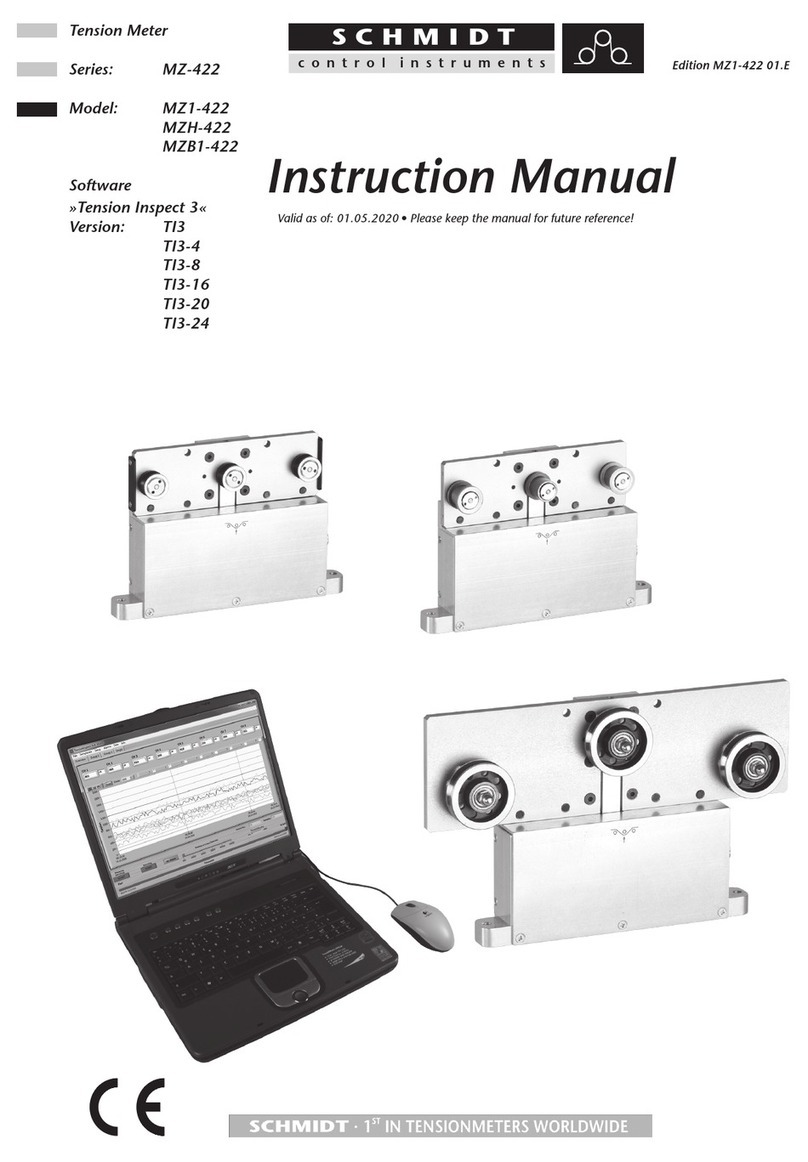
Schmidt
Schmidt MZ-422 Series instruction manual
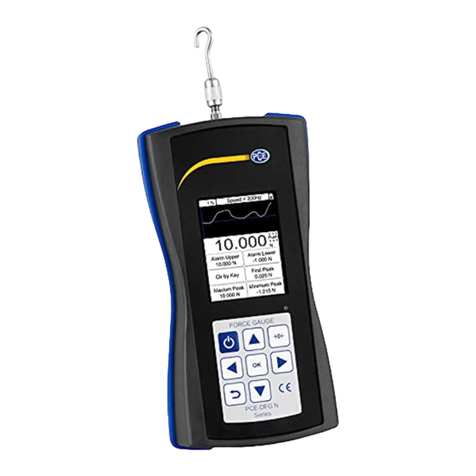
PCE Instruments
PCE Instruments DFG N Series user manual
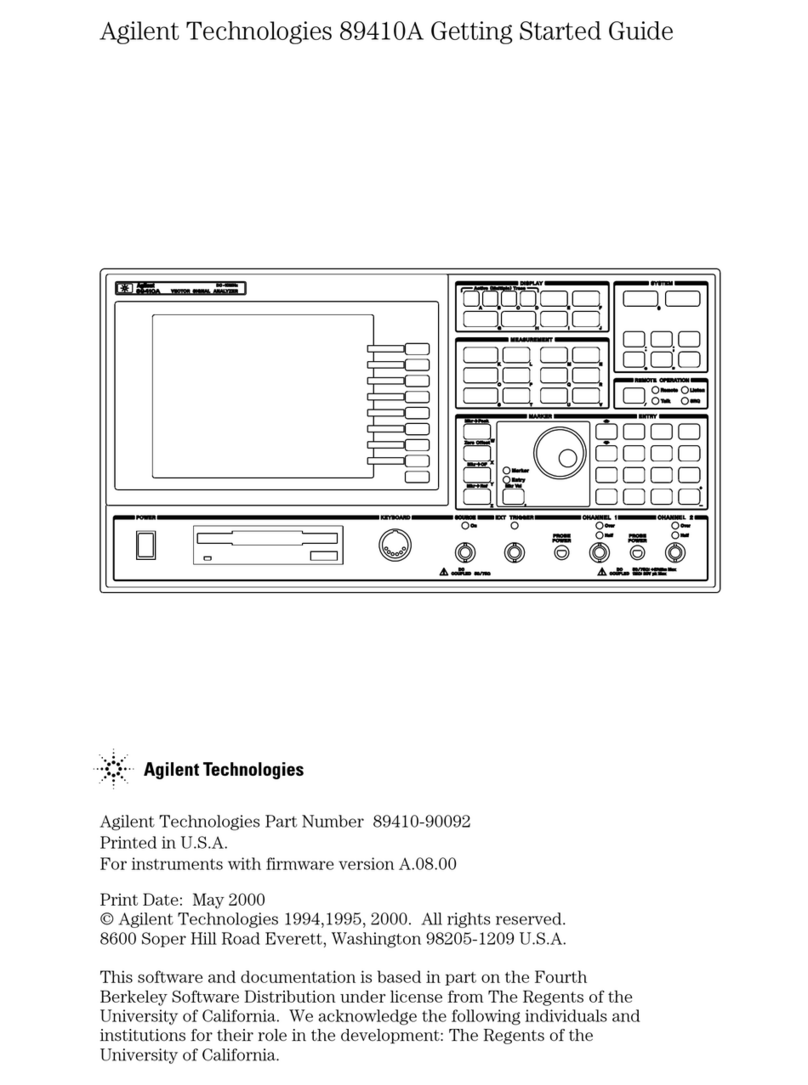
Agilent Technologies
Agilent Technologies 89410A Getting started guide
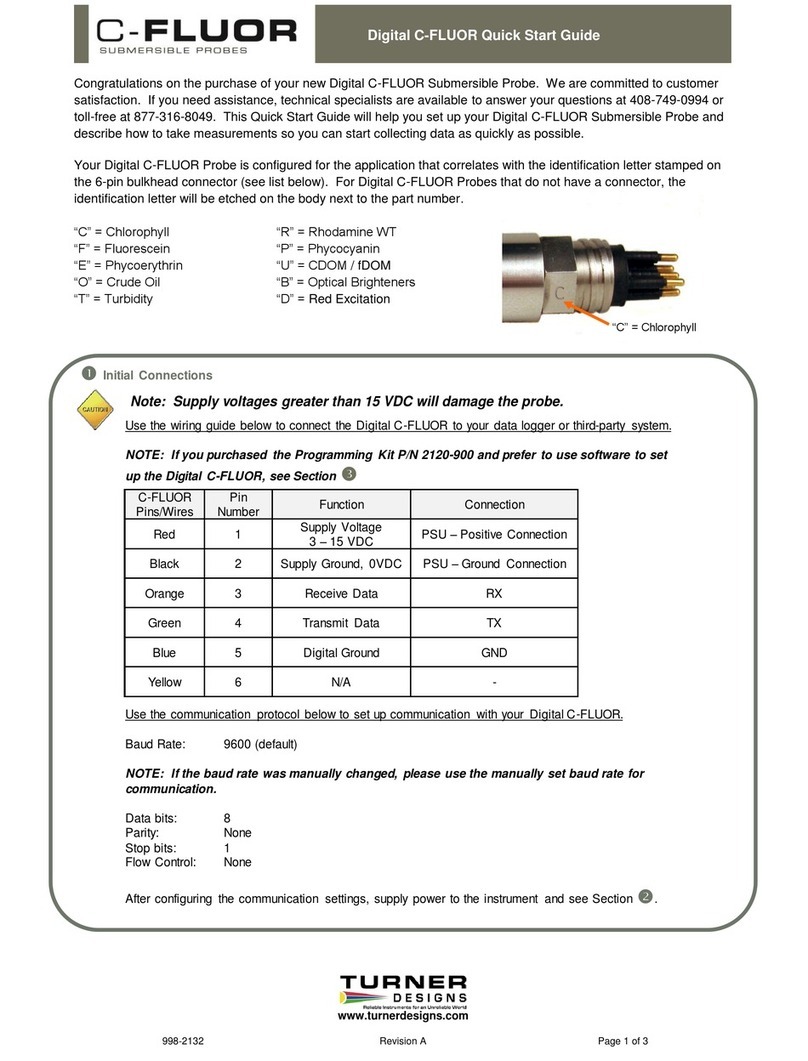
Turner Designs
Turner Designs C-FLUOR quick start guide

Gobius
Gobius Pro Instructions on Paper
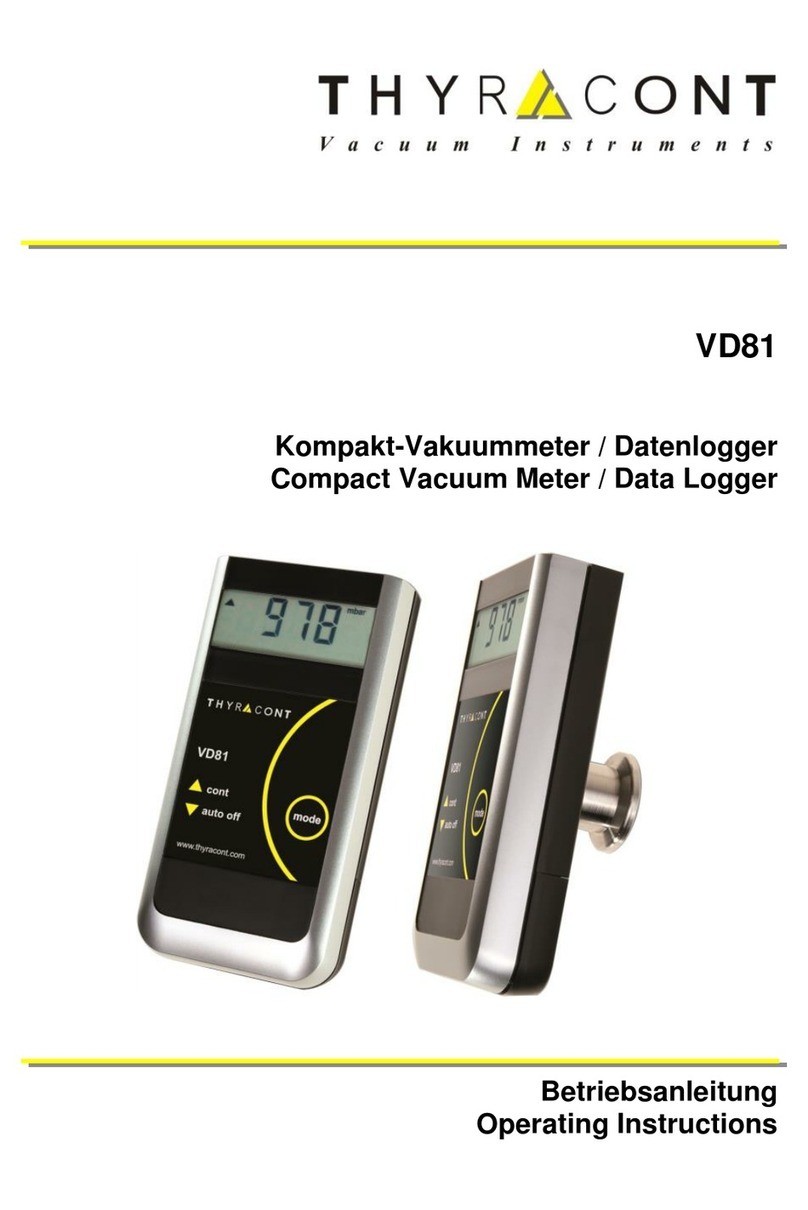
Thyracont
Thyracont VD8 Series operating instructions
